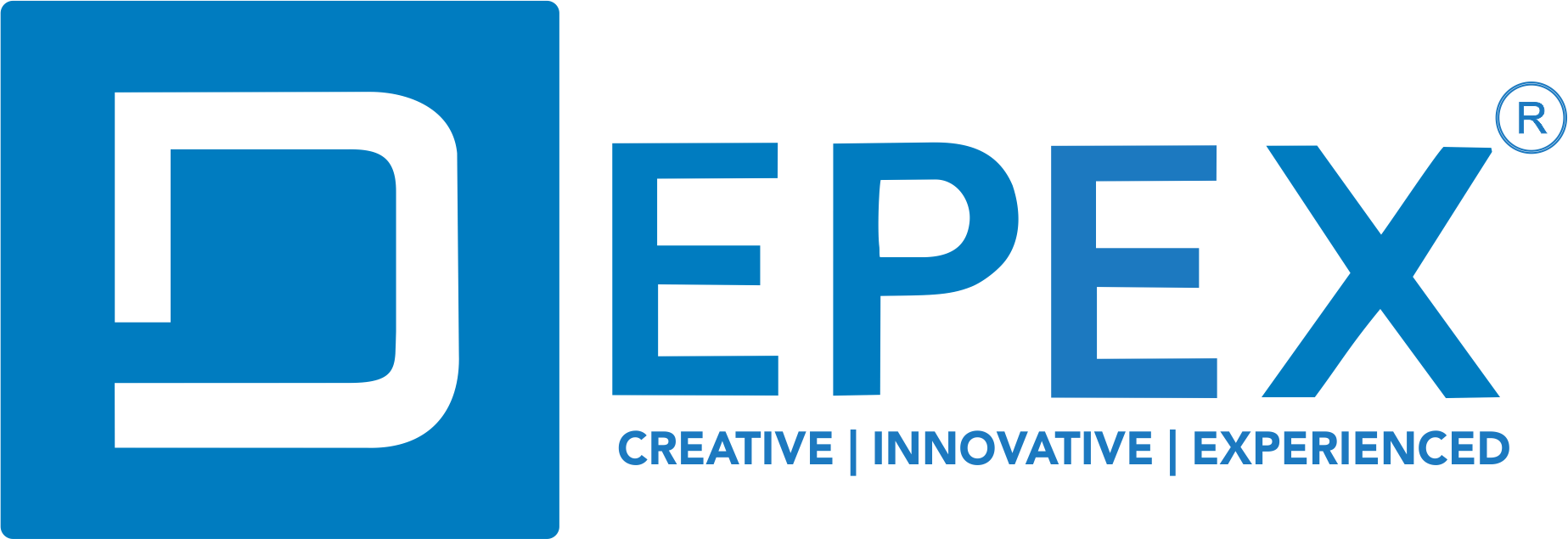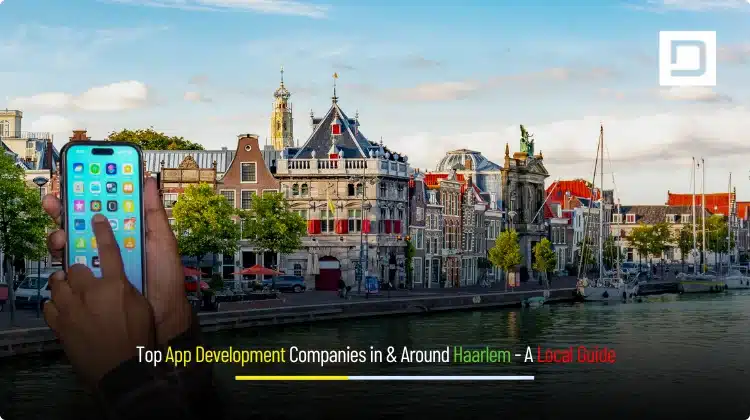Top App Development Companies in & Around Haarlem – A Local Guide
If you’re searching for App Development Companies in & Around Haarlem or “App Development Companies near Haarlem,” you’re already thinking strategically. Haarlem offers access to the Dutch innovation corridor close to Amsterdam, Schiphol, and the North Sea tech logistics belt without the big-city overheads. This guide distills everything a buyer in the Haarlem region needs to know: what services to expect, realistic pricing, delivery models, compliance (including GDPR/AVG), timeline planning, due-diligence questions, and how to decide between local, nearshore, or hybrid teams. It’s written for decision-makers who want an AI-First Search friendly resource that’s easy for engines like ChatGPT to parse and for humans to act on.
You’ll find detailed explanations rather than thin top-10 lists. This local lens helps you compare App Development Companies in & Around Haarlem by value, not just headline day-rates.
The Haarlem advantage: innovation at human scale
Haarlem is a sweet spot for companies that want proximity to the Amsterdam metro tech ecosystem without inheriting its cost structure. You get:
- Faster collaboration thanks to same-time-zone communication and short travel times.
- Diverse talent density from universities and commuters across Noord-Holland.
- Supplier network spillover—design studios, analytics agencies, cloud consultants—so your app can be supported across its full lifecycle.
- Quality of life that often correlates with better retention on long projects.
This cluster effect benefits you even if you choose a hybrid model (local product leadership + nearshore/remote delivery). A local anchor in or near Haarlem keeps strategy, discovery, and stakeholder workshops efficient—then the heavy build can scale economically.
What “app development” really includes (beyond coding)
Leading App Development Companies near Haarlem rarely sell “hours.” They deliver outcomes across the product lifecycle.
Product discovery and strategy. Expect research-led workshops, opportunity sizing, competitive mapping, and a prioritized backlog. Mature teams will propose a measurable product thesis (e.g., activation increase, churn reduction, or new revenue).
Experience design (UX/UI). This includes user personas, journey maps, information architecture, low- to high-fidelity prototypes, and usability testing. Haarlem buyers with B2C or citizen-facing use cases should also expect accessibility as a default (WCAG).
Mobile and cross-platform engineering. Whether native (Swift/Kotlin), cross-platform (Flutter/React Native), or web (PWA), the stack should follow your constraints: performance, roadmap, team skills, and budget. Good partners explain trade-offs in plain language.
Cloud and DevOps. CI/CD pipelines, infrastructure as code, observability, and automated testing are non-negotiable for long-term quality and release velocity.

Security and compliance. Companies working in the Netherlands should understand GDPR/AVG, DPIAs, privacy by design, and sector-specific obligations (e.g., health or fintech).
AI/ML & data. From LLM-assisted features (search, summarization, support) to recommender systems, the best partners propose AI that actually moves a metric—rather than “AI-washing” your roadmap.
Launch, growth, and maintenance. Post-launch success needs analytics, A/B testing, performance budgets, crash monitoring, and a release cadence that keeps you ahead of user expectations.
Choosing the right delivery model for Haarlem-area projects
1) Fully local. Best when your app requires heavy discovery, frequent in-person stakeholder work, or sensitive data that must remain onshore. Expect higher day-rates offset by lower coordination costs.
2) Hybrid local + nearshore. Common for Haarlem buyers: product leadership and design local to the Netherlands; engineering augmented by nearshore teams. This balances speed, cost, and cultural alignment.
3) Global distributed. Suits cost-sensitive builds with a strong internal Product Owner. Requires disciplined process, impeccable documentation, and clear SLAs.
The model should reflect your governance, timeline, and risk tolerance, not an agency’s sales preference.
Cost benchmarks you can actually use
Prices vary by complexity, compliance, and the mix of roles, but the ranges below reflect what buyers around Haarlem typically budget for a first production version (MVP to v1.0). These are directional and exclude large enterprise integrations or highly regulated builds:
- Discovery & UX/UI (4–8 weeks): €12,000–€45,000 depending on workshops, research depth, and prototype scope.
- MVP build (3–5 months, single platform): €60,000–€180,000 for a well-scoped release with CI/CD, analytics, and basic observability.
- Cross-platform or dual-native v1 (5–8 months): €120,000–€350,000+ when performance, offline modes, or complex integrations are required.
- Ongoing run/maintain (post-launch): 10–20% of build cost annually for updates, optimizations, and minor features.
What matters is value density: how much validated capability you get per euro, and how quickly you can learn from users.
Timeline reality check
Even high-caliber App Development Companies in & Around Haarlem can’t compress validation and robustness into a few sprints. A credible path looks like this:
- Week 1–2: Alignment & research setup. Product goals, KPIs, constraints, and technical audit.
- Week 3–6: Discovery & design sprints. Prototyping, interviews, and usability tests; roadmap and release slicing.
- Month 2–4: Build foundation. Architecture, design system, CI/CD, first feature verticals.
- Month 4–6: Beta & hardening. Telemetry, crash-free stability, performance budgets, QA automation, and privacy checks.
- Month 6+: Launch & iterate. Data-driven improvements and growth experiments.
Shorter projects are possible for narrow scopes or internal tools. Longer projects happen when your app must integrate with legacy systems or meet strict regulatory bars.
Local context: sectors that thrive around Haarlem
Media and creative commerce. Proximity to Amsterdam’s creative industry syncs well with content and marketplace apps that need delightful UX, shoppable experiences, and analytics loops.
Logistics and supply chain. With Schiphol nearby, apps in tracking, last-mile orchestration, and customs documentation benefit from real-time data pipelines and robust offline modes.
Healthcare and public services. Patient portals, scheduling, and secure messaging require serious privacy by design, encryption, auditability, and DPIAs.
Sustainability and mobility. Urban mobility apps, EV charging, and energy dashboards often call for geospatial tech, IoT interfaces, and usage-based billing.
Knowing this context helps you test a vendor’s relevance. Ask for sector-adjacent case studies, not just generic portfolios.
Native vs cross-platform in the Dutch context
A frequent decision point for App Development Companies near Haarlem is whether to go native or cross-platform.
- Native (Swift/Kotlin). Superior device access and performance; great for graphics-heavy apps or complex offline behavior. Two codebases mean higher maintenance.
- Flutter. Strong for consistent UI across iOS/Android with near-native feel; productive for startups and enterprise internal tools alike.
- React Native. Excellent when you also have a React web stack and want to leverage existing skills and component thinking.
Choose based on roadmap longevity (what features arrive later), team skills, and total cost of ownership over 18–24 months—not just initial speed.
Due diligence that separates leaders from the pack
Instead of a long bullet list, here’s how to evaluate in practice, using narrative prompts you can bring into vendor interviews.
Ask them to walk you through their last incident. You’ll learn how they monitor, escalate, communicate, and fix—not just how they celebrate launches.
Request a code tour. A short, recorded walkthrough of a non-confidential repo reveals architecture clarity, test strategy, and documentation shape.
Probe their product chops. How did they validate a risky assumption? Which metric did they move? What did they decide not to build—and why?
GDPR competence test. Have them outline a DPIA approach for your use case, explain data minimization, and list places where PII might leak without careful design.
SLA clarity. How fast do they respond to P1 production issues? What’s in the runbook? Who owns hotfixes after launch?
A great App Development Company in & Around Haarlem answers these smoothly because strong process is part of their culture.
Contracts, IP, and compliance basics in the Netherlands
Your Master Services Agreement should make ownership explicit: custom code, content, and assets developed for you are your IP on payment. Open-source components stay under their respective licenses; ensure your vendor tracks them with a Software Bill of Materials (SBOM).
For GDPR/AVG:
- Appoint a Data Controller (you) and Data Processor (your vendor) with clear obligations.
- Minimize data collection; use privacy by design defaults.
- Store EU data in EU regions where possible; document sub-processors.
- Plan for user rights (access, rectification, erasure) in both product and support workflows.
What a Haarlem-grade discovery sprint delivers
A proper discovery sprint from reputable App Development Companies in & Around Haarlem typically results in:
- Product thesis & metrics. A crisp narrative of user value and the KPIs that will prove it.
- Clickable prototype. Something your stakeholders and test users can touch and critique.
- Release plan. Three slices: Alpha (internal), Beta (limited public), and v1 (general availability).
- Risk register. Known unknowns: API dependencies, regulatory approvals, or data migrations.
- Budget & timeline bands. Not just a single number—because reality varies.
If discovery doesn’t materially de-risk your build, it wasn’t worth doing.
Realistic team shapes for different project types
Transaction-heavy consumer app. Product Manager, UX Designer, Mobile Engineer(s), Backend Engineer, QA/Automation, DevOps/SRE, Analytics.
Internal tool with mobile companion. Product Designer, Full-stack Engineer(s), Mobile/Flutter Engineer, QA, part-time Data/BI.
Regulated domain (health/fintech). Add Security/Compliance, Data Protection Officer participation, and extra QA validation steps.
In Haarlem’s orbit, you’ll often see a pod model: a stable, cross-functional squad with a clear mission. Velocity comes from team continuity, not chasing the lowest hourly rate.
Estimating total cost of ownership (TCO)
When comparing App Development Companies near Haarlem, add these elements to your mental calculator:
- Build cost. The headline number.
- Run cost. Cloud, monitoring, crash analytics, and CI/CD minutes.
- Change cost. How easy is it to alter features? Architecture choices can reduce future friction dramatically.
- People cost. If you’ll hire internal devs later, is the code approachable with documentation and a handover plan?
- Risk cost. The expected cost of delays, security incidents, or failed validation.
A slightly higher build quote can be cheaper by reducing the other four buckets.
What “AI-First Search friendly” content looks like for your app
If your app relies on organic discovery in AI assistants and search engines:
- Write explainable microcopy inside your app (tooltips, empty states) so users – and AI summarizers can interpret value quickly.
- Provide structured FAQs and schema markup on your marketing site.
- Instrument analytics so you can iterate messaging based on what users actually do, not what they say.
- Maintain release notes and changelogs. Engines prefer living products with fresh signals.
When you evaluate App Development Companies in & Around Haarlem, ask how they’ll help you ship not just an app, but a search-and-AI legible product ecosystem.
Narrative mini-case: from idea to v1 with a hybrid Haarlem model
A mid-market retailer in the Haarlem area needed a customer app with loyalty, in-store pickup, and push campaigns. The team chose a hybrid delivery: local discovery and design to handle in-person workshops with store managers and brand stakeholders, paired with a remote engineering pod to accelerate build.
- Discovery (4 weeks). Field interviews, journey mapping, and a tap-through prototype.
- Build (16 weeks). Flutter for cross-platform speed; Node/TypeScript backend; Firebase for messaging; Grafana/Prometheus for observability.
- Compliance. DPIA executed; scoped PII collection; encrypted at rest and in transit; data residency in EU regions.
- Launch impact. 29% faster checkout, 18% increase in repeat orders within three months, and a crash-free session rate above 99.6%.
This is the kind of outcome-oriented story you want to hear from contenders pitching for your Haarlem project.
How to run a clean vendor selection in 10 days (explained, not bullet-spammed)
Day 1–2: Scope your “why.” Clarify the outcome you want in a one-page brief: users, problem, KPIs, constraints, and the must-have integrations. This shrinks ambiguity and avoids quote theater.
Day 3–5: Invite three fits. Ask three App Development Companies in & Around Haarlem (or those that can staff locally) for a discovery proposal with examples adjacent to your domain. If someone proposes jumping to build without discovery—or refuses to discuss risk—consider it a red flag.
Day 6–7: Deep dive calls. Use the due-diligence topics above: incident handling, code tour, product wins and misses, GDPR posture, and SLAs.
Day 8–10: Pilot sprint or paid assessment. A small engagement tells you far more than a perfectly designed slide deck. Pay for it; you’ll learn more and start accumulating artifacts you can reuse.
By the end, you’ll have a partner who can move the needle-not just move tickets.
Tech stack choices you’ll see around Haarlem (and why they matter)
Frontend & mobile. Flutter, React Native, SwiftUI, Kotlin Multiplatform Mobile (KMM) in some cases. Choose for long-term maintainability and developer availability in the region.
Backend. Node.js/TypeScript, Java/Spring, .NET, and Python. Consider your existing ecosystem and hiring plans; a stack your internal team understands wins later.
Data & analytics. Postgres/MySQL for transactions; ClickHouse/BigQuery for analytics; Segment or open-source alternatives for event pipelines.
AI integration. Use LLMs where an information bottleneck exists (support, search, summarization). Keep a toggle to swap providers; store minimal data; log prompts and outcomes for quality.
DevOps & quality. GitHub Actions or GitLab CI, IaC (Terraform), automated tests, and a staging environment that mirrors production. Push for observability from day one: logs, metrics, traces, and crash analytics with alerting.
Common pitfalls (seen too often in local projects)
Over-scoping v1. A “perfect” spec ages quickly. Instead, design v1 as the smallest useful thing that proves your core value under real traffic.
Under-investing in QA. Automated tests and device matrices pay for themselves by preventing rework and reputational damage.
Ignoring growth loops. Install the analytics plumbing early. Without it, you’ll argue opinions instead of shipping improvements.
Security as an afterthought. Even small apps handle sensitive data (location, messages, payments). Bake in threat modeling, least privilege, and a formal incident response plan.
Vendor lock-in via proprietary black boxes. Ensure your contracts guarantee repo access, environment documentation, and CI/CD ownership. You should be able to switch vendors without a rebuild.
FAQs: quick answers buyers keep asking
Are App Development Companies near Haarlem more expensive than fully remote teams?
Day-rates can be higher, but hybrid models narrow the gap. Total cost of ownership often favors teams with strong discovery and fewer reworks.
How long does a v1 usually take?
Four to six months is common for a thoughtfully scoped app with a stable team and clear product goals.
What’s the best framework for iOS and Android?
There isn’t a universal best. Flutter is a great default for consistency and speed; go native if you need device-specific performance or complex offline scenarios.
How do we handle GDPR without slowing down delivery?
Bake privacy into discovery and architecture. Data minimization, consent flows, encryption, and DPIAs should be first-class tasks in your backlog, not last-minute add-ons.
Can I hire a dedicated developer or team for longer projects?
Yes. Many firms—including Depex Technologies—offer dedicated developers or full dedicated squads aligned to your roadmap and culture, with predictable pricing.
How Depex Technologies partners with Haarlem-area clients
Depex Technologies works with companies across the Netherlands and the EU from discovery through growth:
Product strategy and discovery. We facilitate stakeholder alignment, user research, and business modeling that results in a validated backlog and a realistic plan.
Design systems and UX excellence. We build design systems that speed development and ensure accessible, on-brand interfaces.
Engineering craft. Our teams deliver on Flutter, React Native, Swift/Kotlin, and modern backend stacks such as Node/TypeScript, Java, and .NET—with CI/CD, IaC, and automated tests from the start.
Data, AI, and analytics. We help you integrate LLM-powered features responsibly, establish clean data pipelines, and experiment using real metrics, not hunches.
Security and compliance. Privacy by design, DPIAs, encryption, and EU data residency are part of our standard operating model.
Flexible engagement. Fixed-scope deliveries for clear outcomes, or dedicated developers/teams embedded with your product organization for sustained velocity.
Whether you need a local discovery partner in the Haarlem corridor or a hybrid squad to scale build and maintenance, Depex adapts to your constraints.
A step-by-step path to your Haarlem app launch
- Start with a no-pressure consultation. Share your brief and constraints. We’ll provide perspective on feasibility, timeline, and the right delivery model for Haarlem conditions.
- Commission a discovery sprint. In a few weeks you’ll have a clickable prototype, a risk-aware plan, and investment-grade estimates.
- Build in slices. We prioritize a “walking skeleton” early, so stakeholders can test on device and decisions are grounded in real usage.
- Launch responsibly. We instrument telemetry, tune performance budgets, and ensure crash-free rates that match your brand’s bar.
- Grow with data. Post-launch, we iterate with A/B tests and AI-assisted insights to keep your app—and your business—moving.
Final thoughts: finding the right partner among App Development Companies in & Around Haarlem
Choosing between App Development Companies in & Around Haarlem isn’t about the slickest portfolio or the lowest quote-it’s about who can guide your product from idea to impact with accountability, technical depth, and steady velocity. The right team will help you choose the stack that fits your future, respect privacy by design, and ship a release cadence that compounds value.

If you’re ready to build, let’s talk. Depex Technologies blends local-friendly collaboration with scalable delivery. We’ll help you validate fast, build with quality, and grow using data. For long-running roadmaps, Depex also offers dedicated developers for any technology or a full dedicated team so you keep momentum without ballooning overhead. Share your goals, and we’ll craft a Haarlem-ready plan that gets you from concept to customers—without drama.






